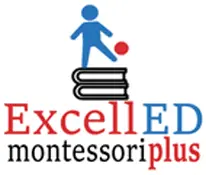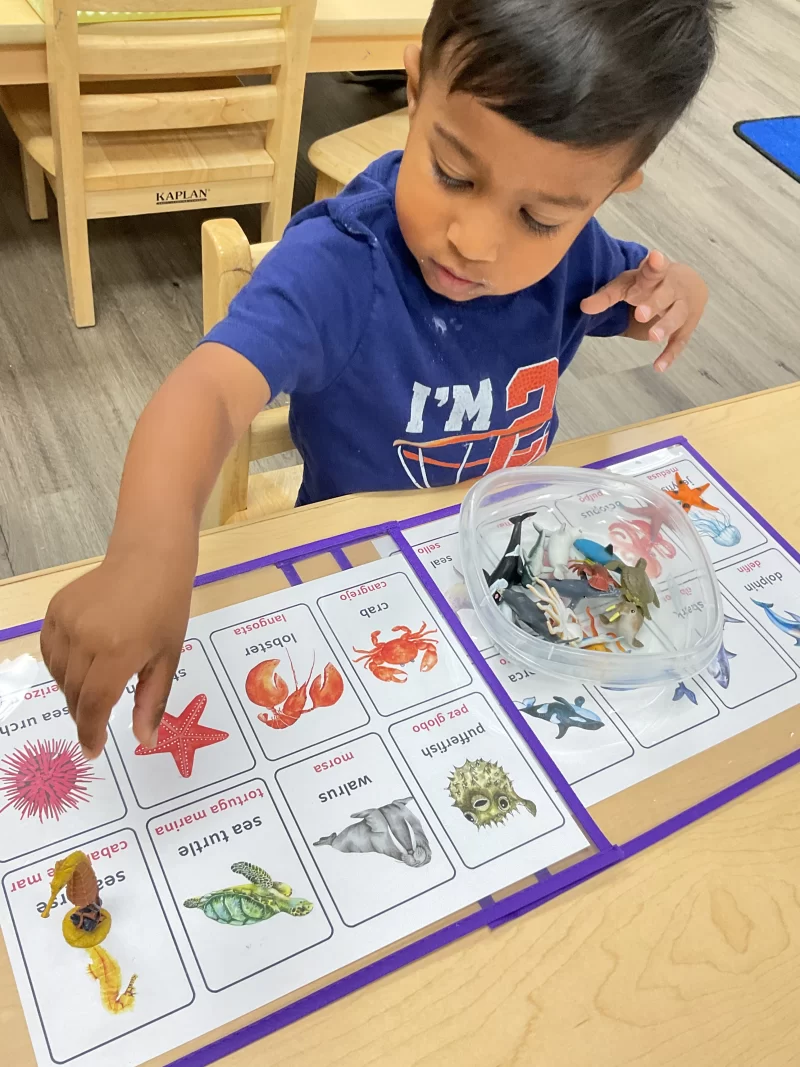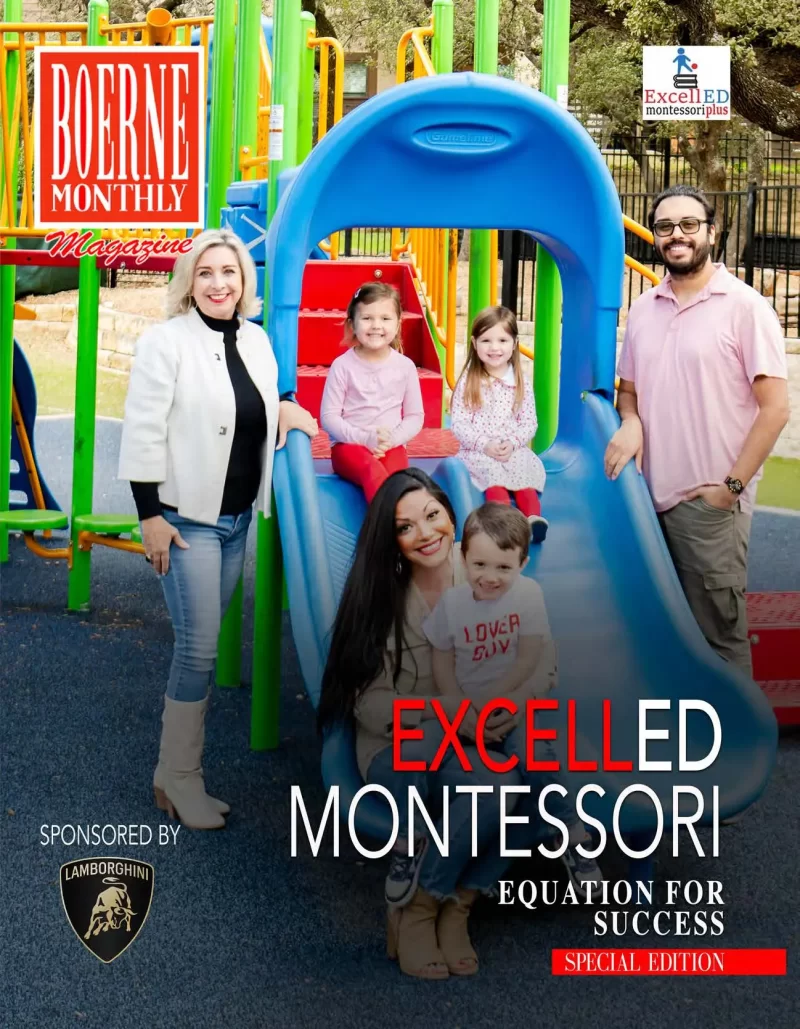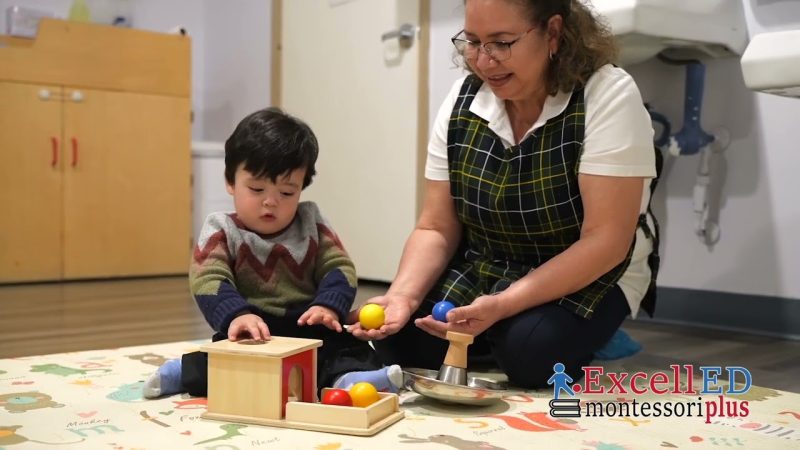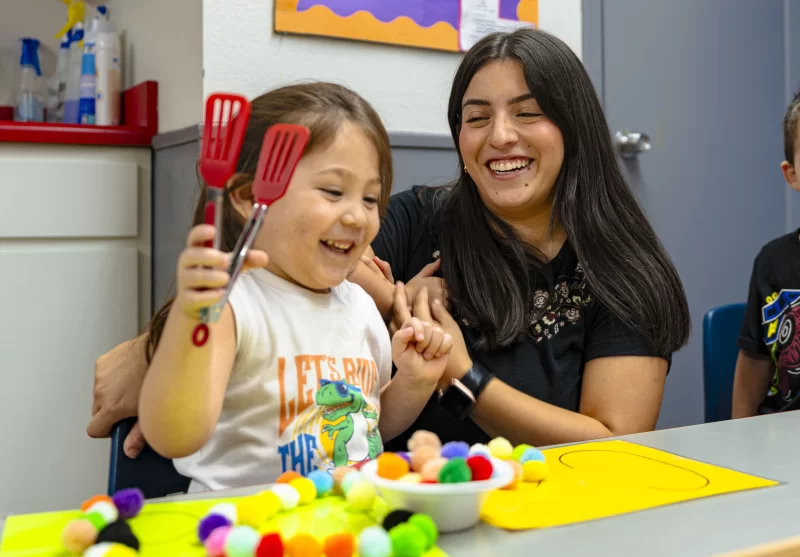Can you imagine your preschooler already reading before they start kindergarten? Research shows that early reading skills are linked to better academic performance, enhanced vocabulary, and improved focus. At Excelled Montessori, we make this a reality. With the right approach, your child can enjoy these benefits and develop a lifelong love for reading. Here’s how we do it in our Montessori classrooms.
What is Reading Readiness?
Reading readiness refers to the stage when a child is ready to learn how to read. It involves developing several skills, such as recognizing letters and sounds, understanding that print carries meaning, and having a growing vocabulary. Children reach this stage at different ages, but there are general milestones that can indicate if your preschooler is on the right track.
Key Milestones of Reading Readiness
- Print Awareness: Your child understands that words on a page have meaning and are related to spoken language. This includes recognizing that text is read from left to right and top to bottom.
- Letter Knowledge: Your child can identify both uppercase and lowercase letters and knows the sounds associated with each letter.
- Phonemic Awareness: Your child can hear and identify individual sounds in words, an important skill for sounding out words when reading.
- Vocabulary Development: Your child has a growing vocabulary and understands the meaning of many words they encounter in books and everyday conversations.
- Listening Comprehension: Your child can understand and discuss the stories read to them, demonstrating an understanding of the narrative and characters.
Laying the Foundation from Toddlers
In a Montessori classroom, everything we do, starting from the toddler stage, lays the foundation for reading and writing. Activities like tracing sandpaper letters develop the fine motor skills needed for writing. Handling small objects, using tongs, and engaging in other practical life activities also strengthen these skills. By the time children are ready to start reading, they have the motor skills and the phonetic awareness needed for success. Some of the key materials include:
- Sandpaper Letters: These tactile letters help children learn the shapes and sounds of the alphabet through touch. Children trace the letters with their fingers, reinforcing their phonetic understanding and fine motor skills (NCES).
- Moveable Alphabet: This set of wooden letters allows children to experiment with word formation. They can arrange the letters to form simple words, enhancing their understanding of letter sounds and word construction (The Nation’s Report Card).
- Phonetic Object Boxes: These boxes contain small objects that represent words with similar phonetic sounds. Children match the objects to corresponding word cards, helping them connect sounds with objects and words.
- Picture Cards and Matching Games: Picture cards with corresponding words help children associate images with words. Matching games using these cards enhance vocabulary and word recognition skills.
- Sound Cylinders: These cylinders are used to develop auditory discrimination, an important skill for distinguishing different sounds in words. Children shake the cylinders and match the sounds, which helps in recognizing phonetic variations.
Designing the Montessori Classroom for Literacy and Writing
In a Montessori classroom, everything is designed with a purpose, including laying the foundation for reading and writing. Here are some key aspects:
- Practical Life Activities: Practical life activities like pouring, spooning, and transferring help develop fine motor skills and hand-eye coordination, which are crucial for writing. These activities also teach children to focus and complete tasks independently (The Nation’s Report Card).
- Left to Right Orientation: Many Montessori activities are designed to be performed from left to right, mirroring the direction of reading and writing in many languages. This helps children internalize the left-to-right progression, making it easier for them to transition to reading and writing.
- Order and Sequence: The Montessori environment is structured to promote order and sequence, important concepts in reading and writing. Materials are organized in a specific order on the shelves, encouraging children to follow a logical sequence when working with them.
- Fine Motor Skill Development: Activities like using tweezers, threading beads, and tracing shapes help strengthen the small muscles in the hands and fingers. This fine motor control is essential for gripping a pencil and forming letters.
- Language-Rich Environment: The classroom is filled with opportunities for language development, including storytelling, singing, and conversation. This rich language environment helps children develop their vocabulary and comprehension skills, which are foundational for reading.
- Hands-On Learning: Montessori emphasizes hands-on learning, which engages multiple senses and reinforces learning. For example, tracing sandpaper letters allows children to feel the shape of the letters while saying the sounds, integrating tactile, visual, and auditory learning (The Nation’s Report Card).
Benefits of Early Reading
Starting to read early has many benefits that last a lifetime:
- Bigger Vocabulary: Constant exposure to language helps children build a rich vocabulary, essential for understanding and communicating.
- Better Focus: Montessori activities teach children to concentrate. This focus is important for reading, where attention is needed to understand the text.
- Love for Learning: By making reading fun and self-directed, Montessori education creates a love for learning that lasts.
- Critical Thinking: Reading encourages children to ask questions and think deeply, skills that are vital for success in school and beyond.
Encouraging Reading at Home
Parents play a big role in helping children love reading. Here are some tips to support your child’s reading journey:
- Create a Reading Space: Have a special place for reading at home, just like in the Montessori classroom.
- Read Together: Spend time reading with your child every day. Choose books they like and talk about the stories.
- Visit the Library: Regular trips to the library provide new and exciting books for your child.
- Be a Role Model: Let your child see you reading. Children often copy adults, so if they see you enjoying a book, they will want to read too.
Conclusion
At Excelled Montessori, we believe the love for reading starts early. By creating a reading-friendly environment and making learning fun, we help children become confident readers. We invite you to visit our school and see how we foster a love for reading in our students. Together, we can give your child the skills and passion for reading that will benefit them for a lifetime.
